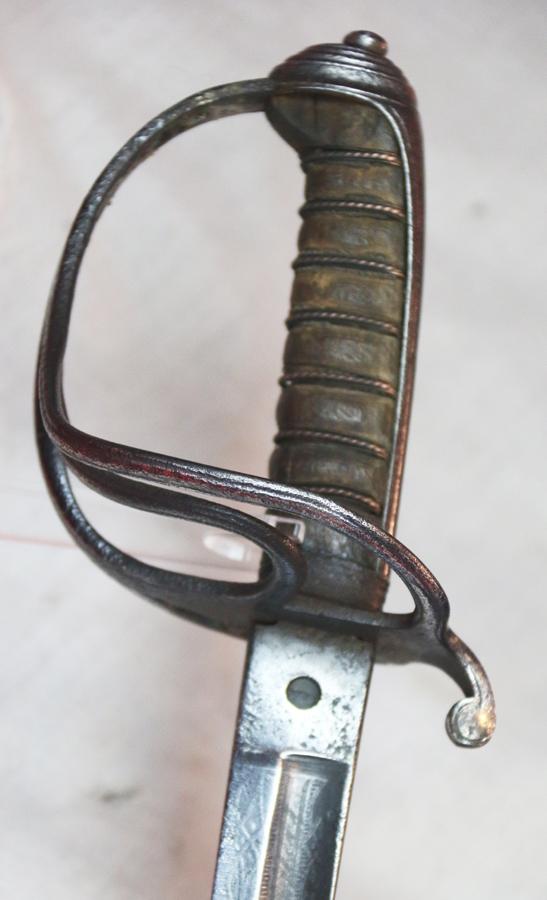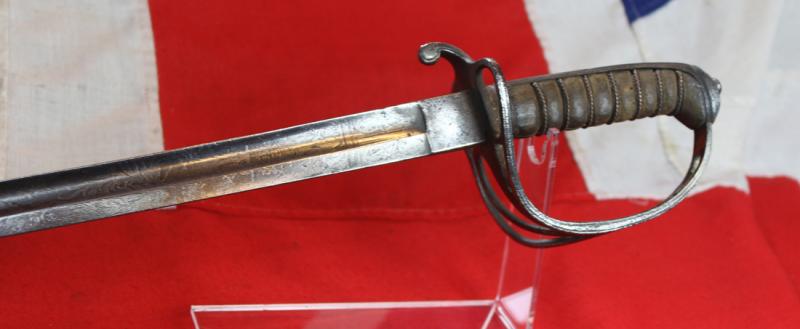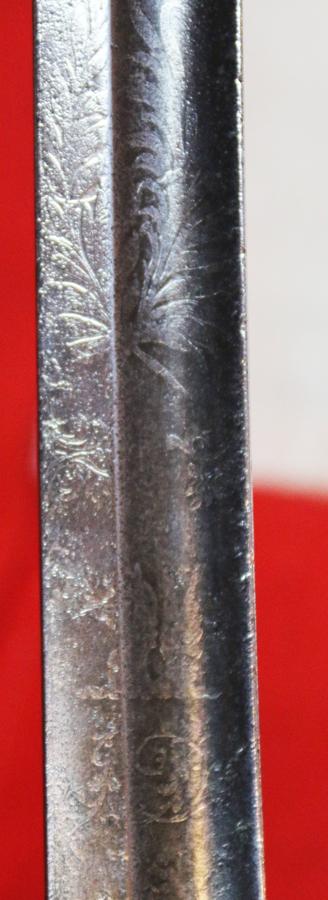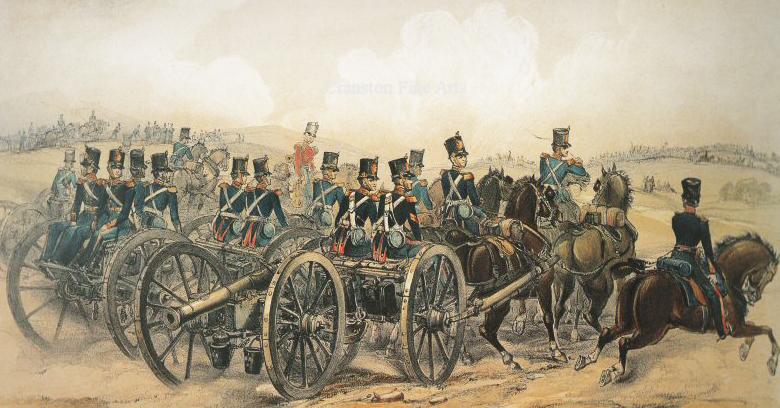A Noble Family Crested Victorian Officer's Artillery Cavalry Sword
Used from 1845 to around 1900. Bearing a family’s noble crest of a collared female griffon head facing sinister, and a pair of wings facing dexter, and a monogram J.D. etched with royal devices on a pair of lances and an artillery cannon, and typical florid decor.
Three bar cavalry type hilt, wirebound wood bound grip. overall russet surface.
The British Military forces have continually used artillery cannon in some form or another since the 15th century. Until 1716, they were provided by artillery trains, raised and disbanded on a campaign-by-campaign basis. But that year, King George I issued a Royal Warrant to set up two permanent field artillery companies of 100 men each. This force soon grew in size as the demand for artillery increased.
Other artillery regiments were also set up at this time, such as the Royal Horse Artillery in 1793, which provided artillery support to cavalry units. Some of these other regiments were merged into the main Royal Artillery, such as the Royal Irish Regiment of Artillery in 1801, and the artillery of the disbanded East India Company in 1862.
The Royal Regiment of Artillery and the Corps of Royal Sappers and Miners, as technical supporting Arms, lived in an alternative military world run by the Board of Ordnance. The commission purchase system was not extended to their officers, who were all professionally trained at the Royal Military Academy at Woolwich. The Gunners were organised into Field Artillery supporting the Infantry, Horse Artillery supporting Cavalry, and Garrison Artillery providing coastal defence and siege guns. Their field guns were relatively short range 6pdr and 9pdr muzzle loaders which had last seen service at Waterloo. The most commonly used all-purpose ammunition was solid iron round shot; with a direct accurate range of around half a mile for a 9pdr, it bounded along on landing like a well struck giant golf ball, to double the range on hard ground. Shrapnel, which exploded via a timed fuse, was particularly effective against massed troops in the open. Finally, Case, or Grapeshot, was the last gasp do-or-die shell; it operated at close range like a huge shotgun cartridge, scattering small projectiles forwards in all directions. Rates of fire were largely determined by the necessity for careful aim, and shortcuts on safety taken by the five man detachment. Two to three rounds per minute was generally taken as normal, and anything higher usually meant that the team were risking accidents.
Field Batteries and RHA Troops consisted of a mix of four field guns and two howitzers. Howitzers lobbed a larger shell as if from a lofted golf club onto a target, which might be hidden from sight. Howitzers did not fire round shot.
No scabbard
Code: 24139
345.00 GBP






